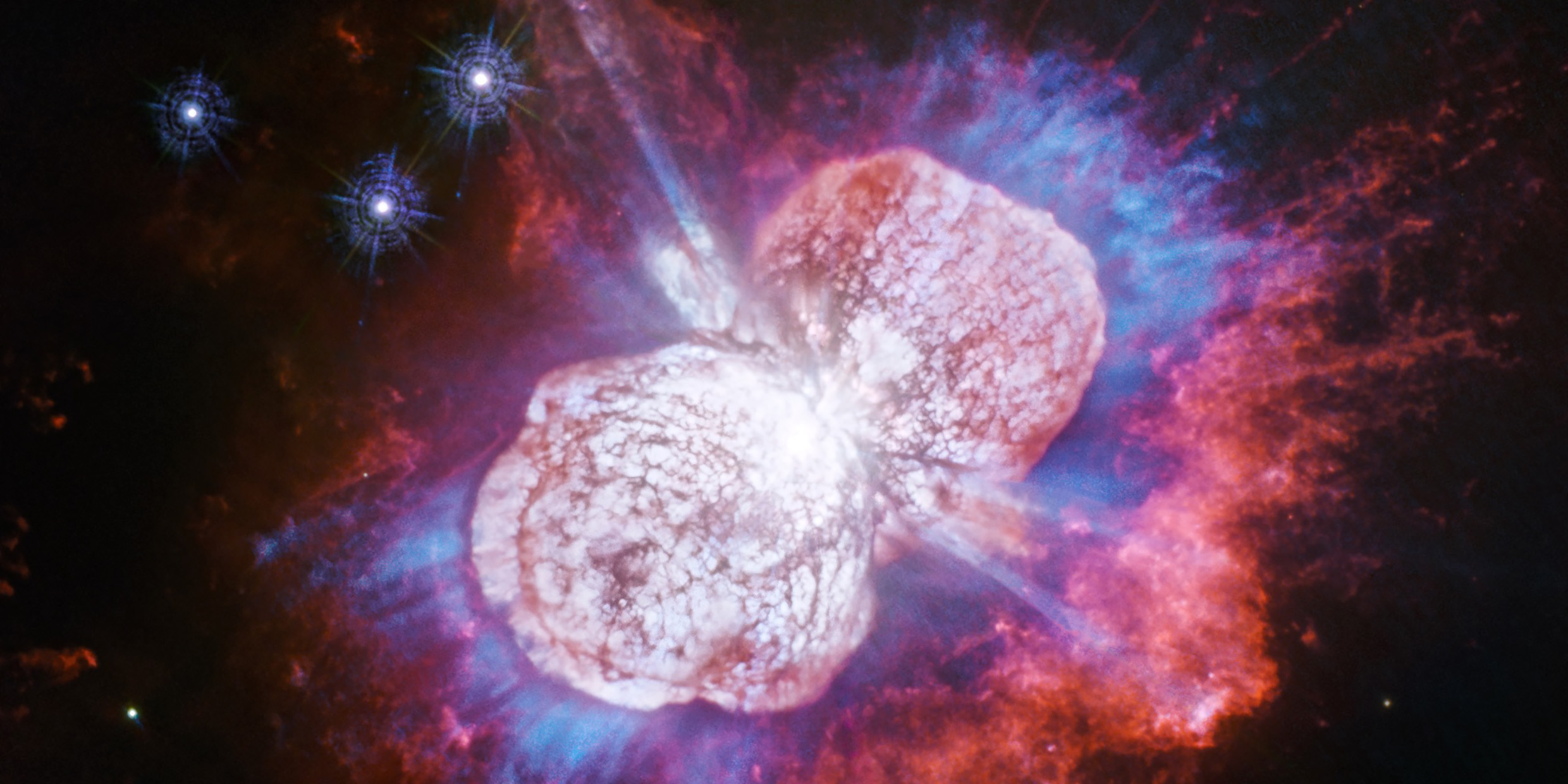Originally published 8 January 2002
Question: How do you turn a star inside out?
Answer: You give it time.
Well, not every star. But certainly the big stars, many times more massive than the sun. Give them time and they’ll spill their guts into the universe.
And a good thing, too. If big stars didn’t turn inside out, you and I wouldn’t be here.
You’ve heard the story before, about how we are made of stardust. But it’s an amazing story, and it gets more amazing with every telling. The Hubble Space Telescope, especially, adds new details to the story almost every week.
The story begins as the universe begins, about 12 billion years ago, with an explosion from an infinitely hot, infinitely small seed of energy. Don’t ask where the seed came from, or where it was, or what went before. Space and time (as we know them) came into existence with the explosion, like a balloon blowing up from nothing.
During the first trillion-trillion-trillionth of a second, matter and antimatter flickered in and out of existence. The fate of the universe hung precariously in the balance; it might grow, or it might collapse back into nothingness. Suddenly it ballooned to enormous size, in what cosmologists call the inflationary epoch, bringing the first permanent particles of matter, the quarks, into existence.
Within one-millionth of a second, the rapid swelling ceased, and the quarks began to combine into protons, neutrons, and electrons. But still the universe was too hot for protons and electrons to hang together. Not until 300,000 years after the beginning did the first atoms appear, and then only the simplest: hydrogen and helium.
The first stars and galaxies were made entirely of hydrogen and helium. Those earliest stars may have had planets, but they were just big Jupiter-like balls of hydrogen and helium, certainly not planets with rocky crusts, watery oceans, or hints of life.
Meanwhile, the stars burned. Deep in their cores they fused hydrogen into helium and helium into heavier elements. This is the source of a star’s energy — thermonuclear fusion, the same source of energy that powers a hydrogen bomb.
Stars build heavy elements as they burn. As a big star approaches the end of its life, it has a core layered like an onion. Iron at the center, surrounded by shells of silicon, oxygen, nitrogen, carbon, and other elements. The stuff of Earth-like planets. The stuff of life. Fused from hydrogen and helium.
But all those heavy atoms are of no use for making Earth-like planets if they are locked up at a star’s core. Fortunately, massive stars die violently. Their cores collapse catastrophically, releasing staggering amounts of energy in a flash of time. The star explodes, blasting its ash of heavy elements into space, turning itself inside out. Even less massive stars like the sun puff off some of their outer layers.
Slowly, as massive stars live and die, the spaces of galaxies become seeded with heavy elements. Subsequent generations of stars contain in their makeup a smattering of heavy elements, and perhaps even shepherd tiny, heavy-element planets like the Earth.
Astronomers have known the broad outlines of this story since early in the last century. But the Hubble Space Telescope has now presented us with dazzling photographs of these spectacular stellar explosions that were utterly essential for terrestrial life. Every atom in our bodies, except the hydrogen, was forged in a star that lived and died before the sun was born.
If you have not seen these Hubble pictures, by all means do so. Here are a few of my favorites:





Given the cost of building, maintaining, and operating the Hubble Space Telescope, each of these photographs costs a staggering amount of money. Are they worth it? Yes, if we care about knowing where we came from.
All people who have ever lived have had a creation story. Often, those earlier stories were inspired by a view of the heavens. But never before in human history has a creation story been so magnificently illustrated, not with the images of human art, but by grand telescopic views of the universe itself.



